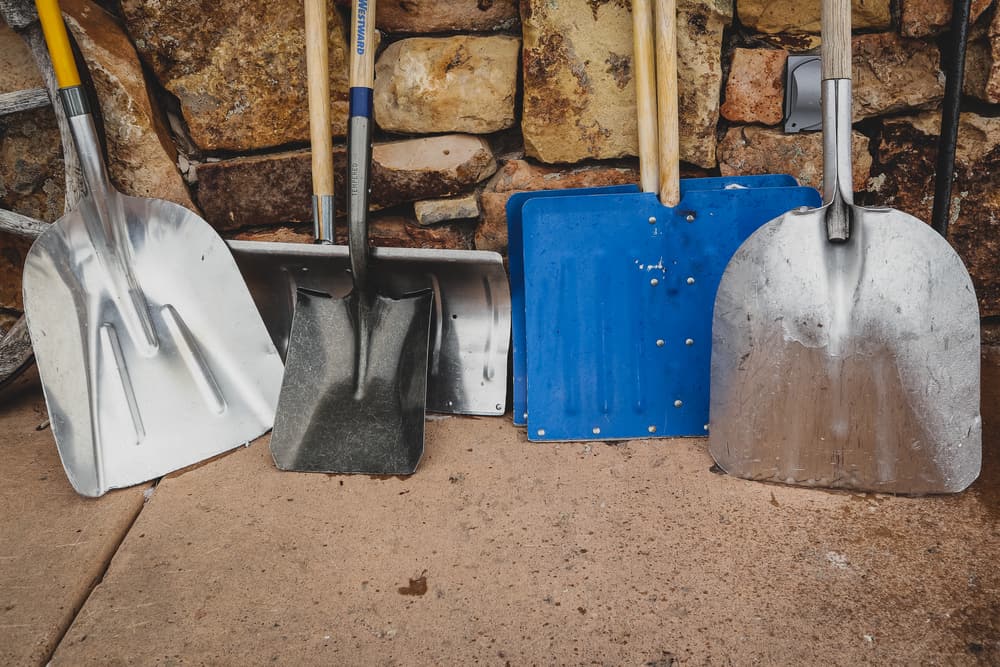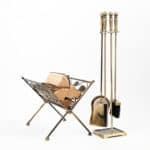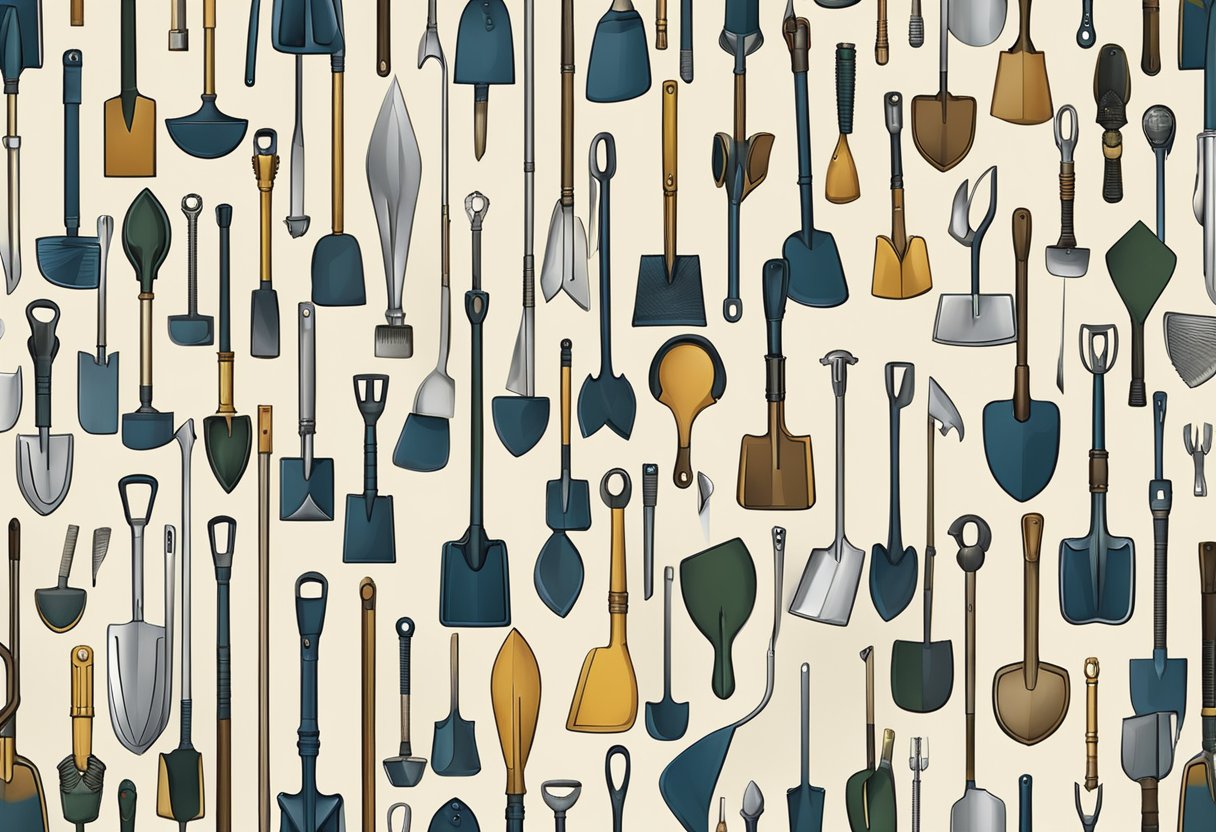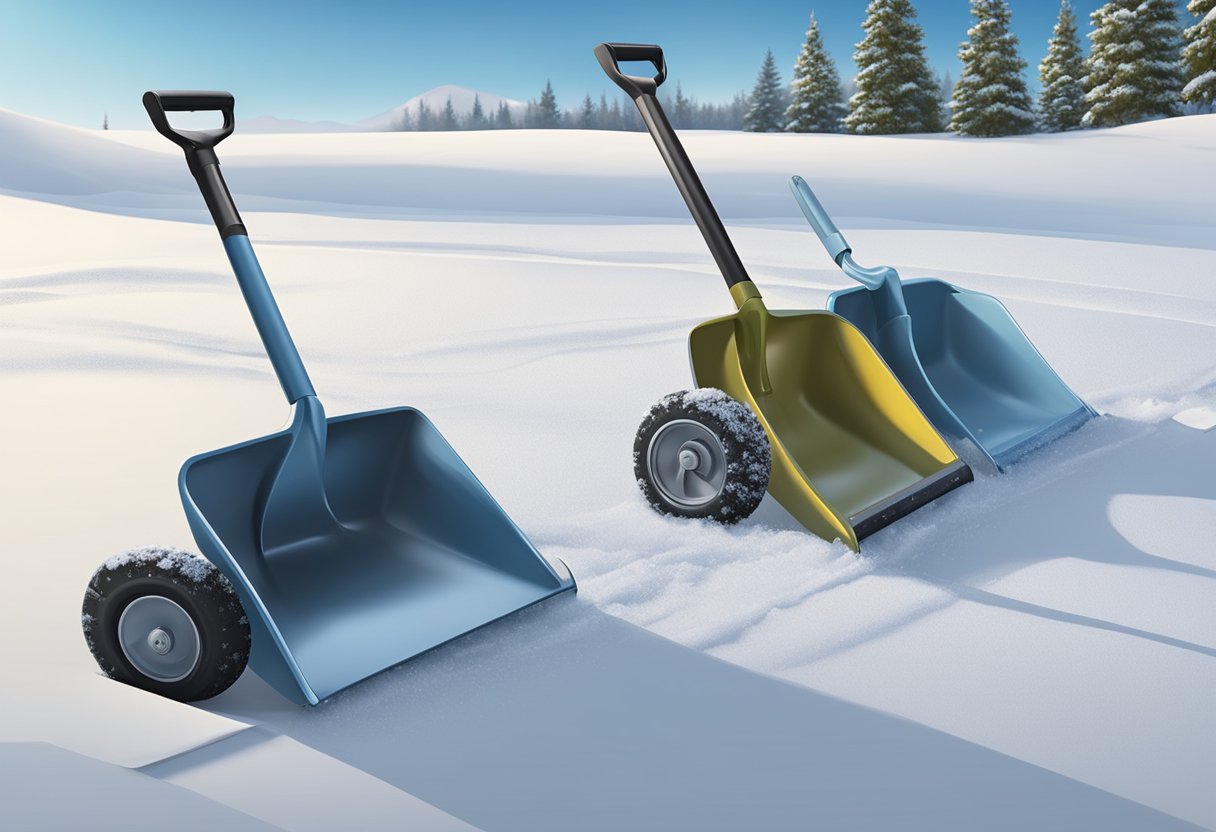Shovels are fantastic tools that make it easier for you to dig holes or move all sorts of material around.
The difference between the two is all in the name.
A transfer shovel is a shovel that allows you to transfer the substrate from one location to another.
On the other hand, you have a digging shovel with sharp edges to dig any hole in the ground.
Table of Contents
Categories of Shovels
There are two general categories of shovels:
- Transfer shovels
- Digging shovels
Regardless of the category of the shovel the commonalities between a transfer shovel and digging shovels are that the shovel’s main components are a shaft and a blade.
Shafts are made out of wood, metal, plastic, or fiberglass. Wood shovels are the most popular.
Blades can be made out of either metal or strong plastic, depending on the purpose of the shovel.
The material used to make the shaft and the blade will influence the shovel’s weight, durability, strength, and longevity.
Now lets look at each shovel category to determine the key differences.
Transfers Shovels
What is a transfer shovel?
Transfer shovels come with either two blades (one on each end) or just one knife-like edge at the end of the shovel.
It is often made from a lighter material such as aluminum or hard plastic.
Usually, it has a convenient D-grip handle at the end of the shaft that makes it easier to leverage, maneuver, and stabilize when lifting material so that you can move it from one location to another with a minimum of spillage.
The best thing about these shovels is their versatility; the blades allow you to dig in and scoop the material to move it.
The blades of transfer shovels are broader and flatter to make scooping and to carry loose material easier.
The most common types of transfer shovels are:
1. Grain Shovels
The grain shovel has a wide blade for scooping, and the edges of the blade are closed in so that the material will balance and not fall off the shovel while transferring it from point a to point b.
The blade itself has an angle of 45 degrees to help penetrate and lift the grain.
They most often are made of aluminum or polypropylene.
2. Coal Shovels
A coal shovel’s features are similar to a grain shovel with two differences.
First, instead of the blade of the coal shovel being angled, the blade is straight, and the handle is angled where it joins the blade.
Second, it would be rare to see a coal shovel made from polypropylene as it is made in various sheet steel gauges.
3. Snow Shovels
They feature blades at least a foot wide or more, are vertically curved, and usually feature several grooves or ridges that help keep snow from clogging on the blade.
You can use a snow shovel to scoop snow, but they work best for simply plowing snow out of the way.
4. Mulch Shovels
Anyone who does a lot of work in the yard can use a lightweight mulch shovel.
Mulch shovels have large scooped blades that curve up on the sides and nearer the handle to facilitate lifting and spreading material like mulch.
5. Rock Shovels
If you are moving or spreading gravel or other small stones, you will appreciate a rock shovel.
These are similar to mulch shovels but are usually made of sturdier material and often have a sharper blade edge to facilitate pushing under gravel or stones.
Digging Shovels
What is a digging shovel?
Digging shovels are made of sturdier material and typically feature sharper edges that enable you to cut into the earth and through roots to create a hole.
The specific purpose of these shovels will determine the type of grip at the end of the handle, and in some instances, there will be no handle/grip at all.
Most popular types of digging shovels
The blades of digging shovels are narrower and sharper so that you can cut into the earth and through roots. The most common digging shovels are:
1. Garden Shovels
These feature sharper metal blades that can either be flat, rounded, or pointed. The flat blade is ideal for hard soil, and you will discover that they make it easier to lift and move small shrubs and bushes.
Pointed blades are ideal for looser soil and can make it easier for you to cut through roots.
2. Trench Shovel
A trench shovel is a shovel that features a long, narrow blade on the end.
The design of the trench shovel allows it to be easily inserted into the dirt, removed again with minimal effort, to dig deep trenches or ditches.
3. The Square Pointed Shovel
A square pointed shovel has one flat edge, which makes it great for scraping.
It also has an open-faced point which can help you cut through rigid material like a rock while also serving its traditional purpose in scooping out materials from your yard.
These are the shovels you most often see construction workers using as they need sturdy tools they can rely on every day.
4. Edging Shovels
Edging shovels feature curved, half-moon blades or flat blades that are sharp and enable you to create a crisp, well-defined edge.
These blades are typically thin so that you can fit them into tight spaces around the yard and garden.
5. Hand Shovels
These are small, hand-held shovels, usually no longer than a foot, perfect for digging holes for small plants or herbs or creating channels for garden fencing.
They feature sharp, pointed metal blades and have larger, comfortable handles to reduce strain on your hand.
6. Flat Pointed Shovel Post Hole Shovels
The flat pointed shovel has blades that come together at a sharp angle, cutting through grass easier than traditional shovels.
The post hole shovel, also known as a post hole auger, is designed to dig deep, narrow holes suitable for burying the end of a post.
There are two sharp, connected metal blades with long handles.
You drive the blades into the ground, twist to loosen the dirt, then extract the earth.
The type of shovel you choose depends on the kind of job that you are doing.
The key differences between a transfer shovel and a digging shovel is blade design and sharpness, weight of the shovel and the material that it is made from.
So, if you are carving into the earth, you will use a narrower, sturdier digging shovel with sharper edges. A broader and lighter weight transfer shovel is your best bet if you move material from place to place.
Looking for more information on types of shovels or how to choose the best shovel, head over to shovelzones information guides.






